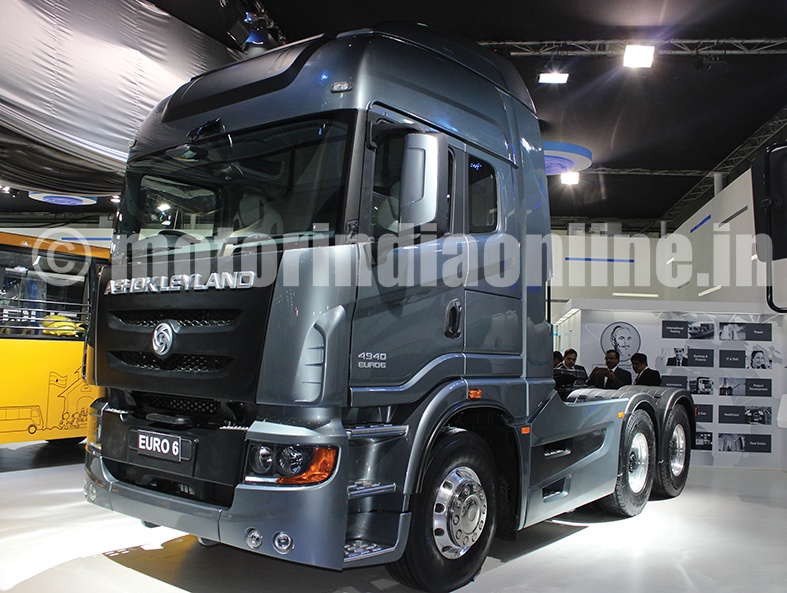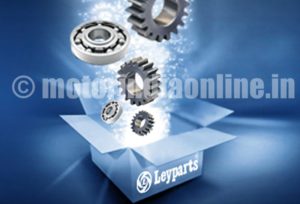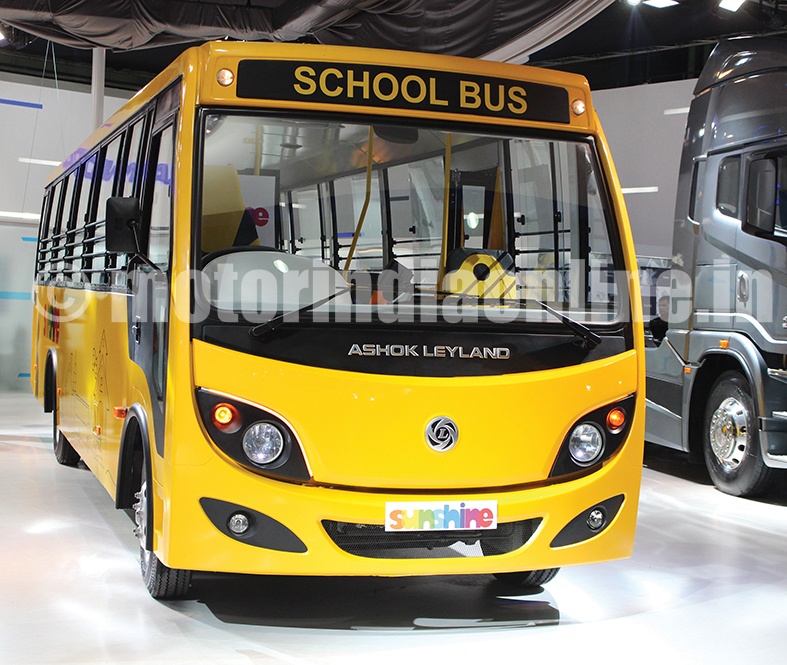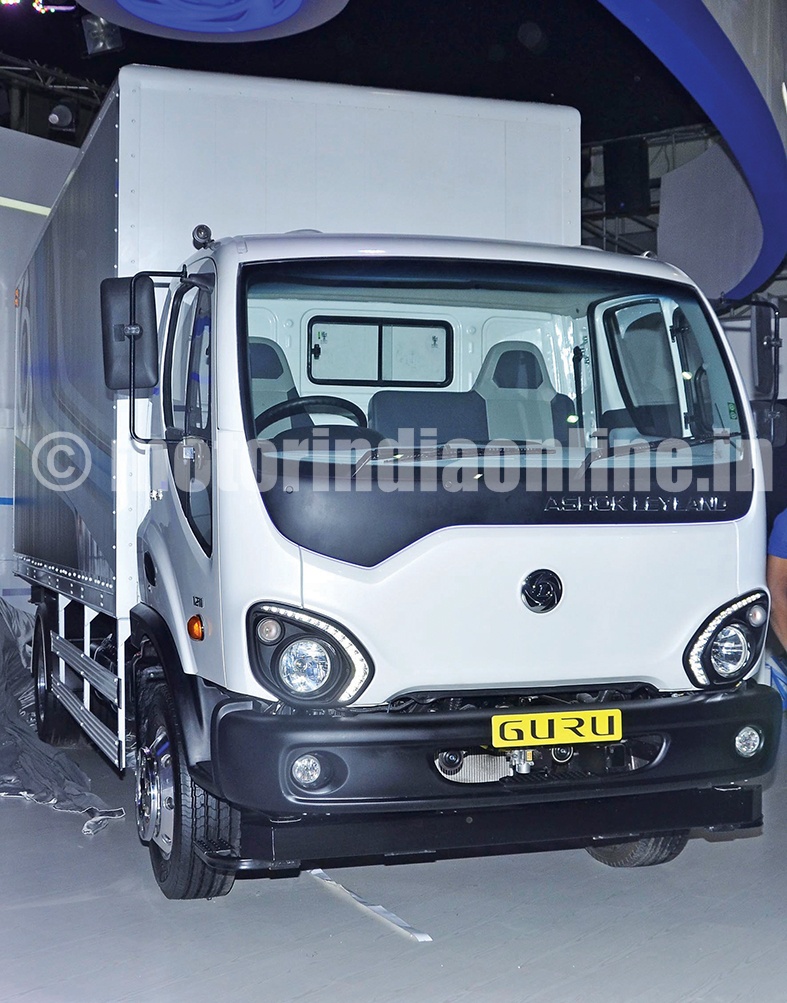Buoyed up by an excellent FY16 and Q1 FY17, Ashok Leyland has chalked out ambitious growth plans for the road ahead; in a freewheeling interaction, Mr. Vinod K. Dasari, Managing Director, Ashok Leyland, and SIAM President, talks about the CV domain developments and company’s focus areas for growth.
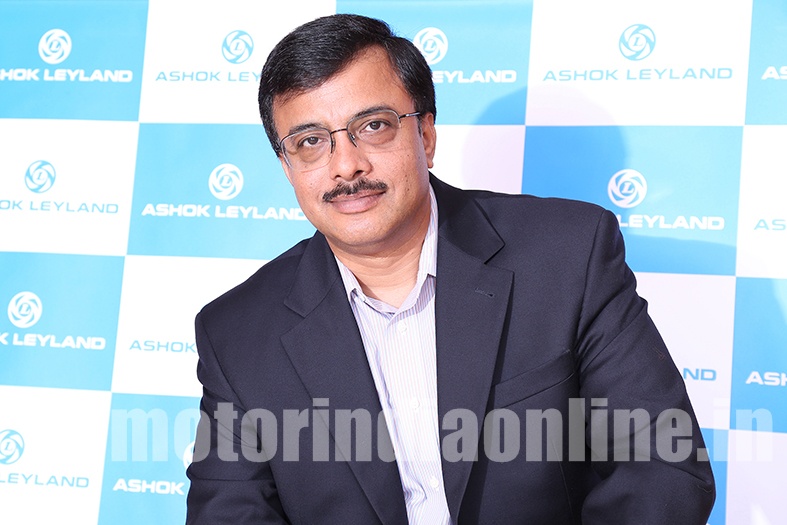
“Let me start with a disclaimer”, begins Mr. Vinod Dasari responding to the focus theme, future of Indian CV industry, 2020 & beyond. He says: “Forget about developments till 2020, it is even difficult to predict about what will happen in 2017 – the reasons being the cyclicality of the industry and volatility within the cyclicality. Talking about volatility let me cite a case from our operations. The annual production volumes in a plant used to fluctuate between 12,000 to 5,000 nos. for a few years, conditions remaining the same with the plant and operating personnel. In such a situation, how can one manage the fluctuation in a year and leave alone that within a month and week. This calls for an agile and nimble-footed approach to address the entire business process”.
Mr. Dasari points out that the issues referred were sorted out by drastically cutting down the Material Resource Planning time, making changes in ERP and creating a module to view all plant operations under one company rather than treating it as different stand-alone companies; and at Ashok Leyland (AL) we can manage now such volatility factors.
Relook at exports and domestic markets
To confront the cyclicality, AL had a critical relook at the products portfolio. Cyclicality was applicable only to ‘domestic trucks’ while the demand patterns were fairly predictable and not cyclical in other product segments.
Mr. Dasari explains: “Examining the word ‘domestic’, we decided to expand our export operations, explore the growth areas where we will be competitive and aim to be a leader in the second hemisphere markets. To easily access the identified markets, we have set up a full-fledged exports office that will be operational by mid Aug this year. We are doubling our capacity in one of the local plants to address the markets in 6 regions – SAARC, Middle East, Africa, CIS, LATAM and ASEAN. In all these places we have either our own assembly plants or working partners”.
He adds: “As for the other word ‘trucks’, at one point of time 80% of the sales came through trucks. Growth per se in the segment was welcome and leaving it as such, we decided to focus on the other segments, viz., buses, LCV, Defence & Power solutions verticals and expand the non-trucks revenue to over 50%; and given an aggressive call for exports revenue contribution target at 30% from the current 7%. We are also not losing focus on the dealer performance and keep a close watch on their profitability. In this regard, we can very clearly say about having in place the 3C model, viz., customer and channel profits will only lead to company’s profit”.
Technology impact and challenges
No CV or auto industry has gone through from Euro IV to Euro VI in 3 years and we have in India that ambitious target for emission norm, viz., implementing BS VI by 2020, states Mr. Dasari. He elaborates: “We are going see BS IV in place only by Apr 2017 and reaching BS VI within such a short span of time is going to pose its own challenges. Fuel availability for BS VI needs to be ensured at all locations; and we need to develop engines and sub-assemblies to meet conditions unique to India. Take for example the heat generation needed to burn off the soot deposited on the substrate of the SCR; it can be achieved only if the vehicle runs at a speed of 60 kmph for 20 min and that’s indeed going to be a tall order in the Indian conditions. Also during the monsoon conditions the exhaust tailpipe often gets submerged in water, a situation dangerous that can lead to the explosion. Thus a fundamental change in approach is needed vis-à-vis tech application. In Europe, 90% of the trucks go to workshops for service and herein it’s the other way around, viz., road side mechanics mostly attend to service issues. AL can climb the tech curve fast and it requires only investments. But how do you educate 100,000 odd mechanics about this technology change in a short time?”
Pointing out the conditions unique to Indian applications, Mr. Dasari says that doing it well for the customers is going to be the challenge in our country. He hastens to add that as SIAM President, he can confidently say that Indian auto companies have been the fastest to adopt any regulation, be it safety or emission. The need of the hour is to have one roadmap to reach that emission goal and the same should come from one nodal agency.
As for focus areas on the domestic front Mr. Dasari indicates that Defence is one segment that will boost AL’s revenue down the timeline. “Not many know about the fact that we are one of the world’s largest logistics vehicle providers for the Defence sector to over 30 countries – our Stallion vehicles are the most sought-after for quality and reliability under arduous field conditions. We have won majority of the tenders in the domain and despite the same, not even addressed 1% of the business potential in the segment. This does not mean that we will get into all segments but limit our focus only to mobility related business areas be it on wheels or tracks”, sums up Mr. Dasari.
Gearing up for the road ahead
Despite the growth in recent times, current M&HCV nos. are nowhere near the 350,000 the industry clocked in FY12, observes Mr. Dasari sounding a note of caution amidst the euphoria over the northward bound demand. “In all the developed economies, M&HCV ratio to population as a rule of thumb works out to 1,000 vehicles per million population ; going by that, we are looking a business potential of about 1.2 million vehicles in India. Even if the industry can reach half of that figure, it would be great – I am bullish about the long term prospects for sector. As for the scrapping policy, it’s time for the Government in office to spell out the time period and here again CV industry needs a clear direction”, remarks Mr. Dasari.
Commenting on LCV and bus verticals, he mentions: “We are committed to the LCV line and more vehicles will get added in that portfolio. I see electric mobility percolating in the bus segment and we have been the first one to introduce the variations, viz., electric, hybrid, non-plug in hybrid and CNG hybrid. We have the comprehensive range of buses and a local market share of around 75% in the intercity segment – yes, that missing model in high end niche market, viz., multi-axle intercity bus should be there in place by 2020. In the world ranking, we are currently at the 4th position in bus and 14th in truck segments; and well on course to top 5 and 10 respectively, hopefully by 2020”.
Mr. Dasari asserts that continuing with the innovation and efforts AL should be at world level of compliance to regulations in the near future; and in such a case, nothing prevents them from going into other markets of the world and entire world becomes their playground. He affirms that if the Indian CV industry incumbents invest in the right technology and innovation, fantastic opportunity awaits in the long run – well, that sanguine observation from the seasoned auto domain executive at the helm of an admired company should indeed rejuvenate and lift the mood and spirit of the industries in general and CV sector in particular.
